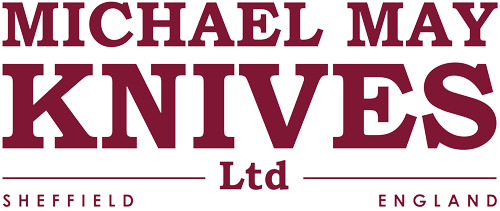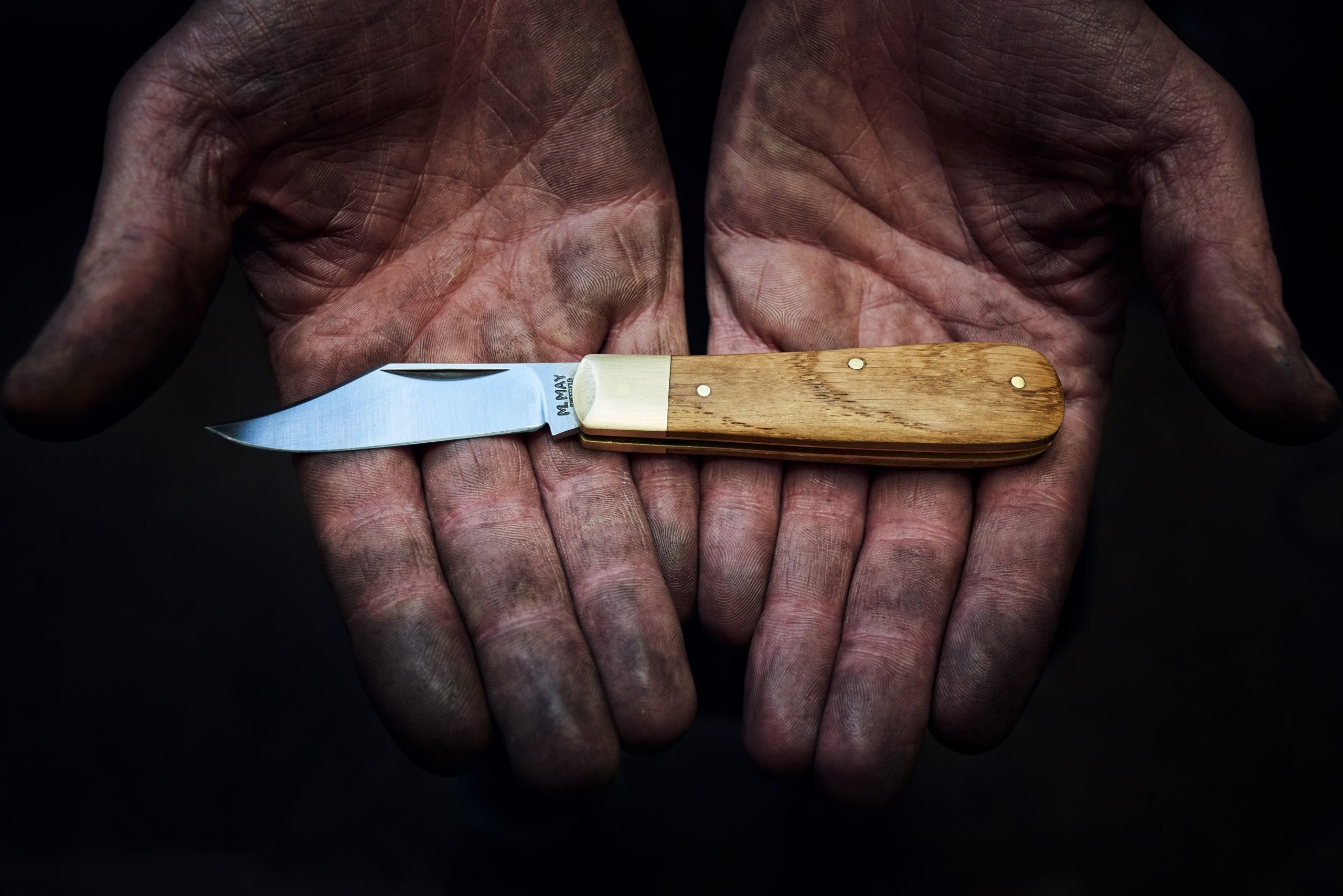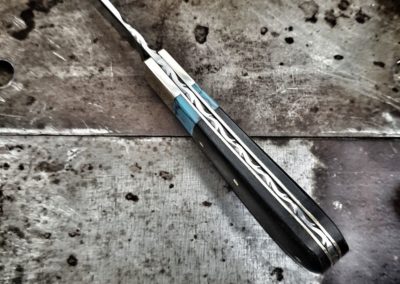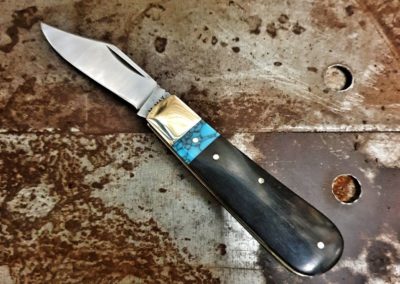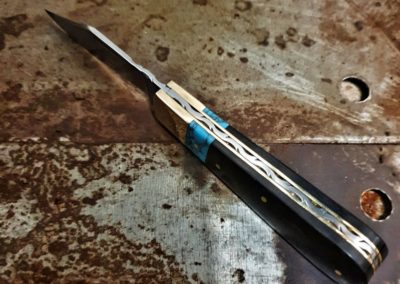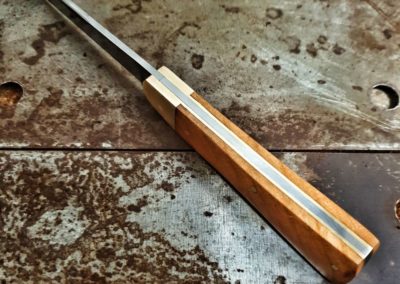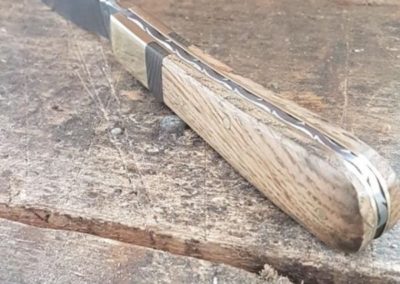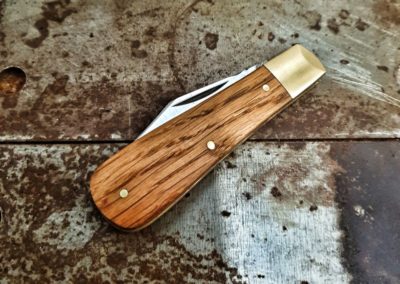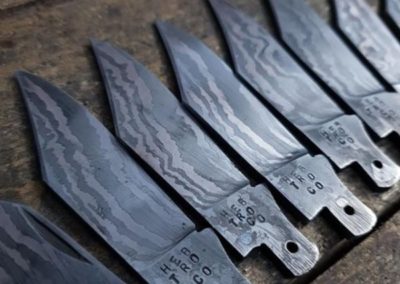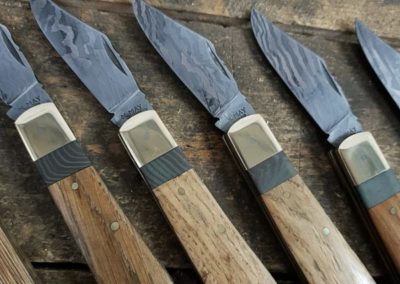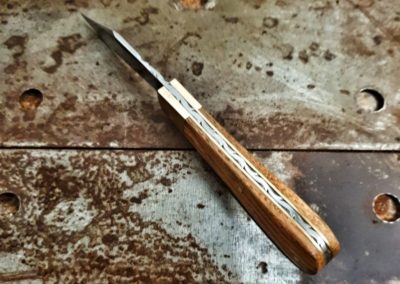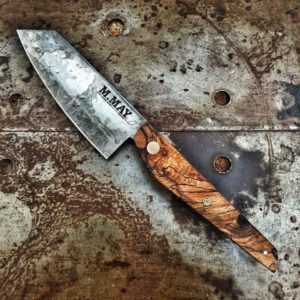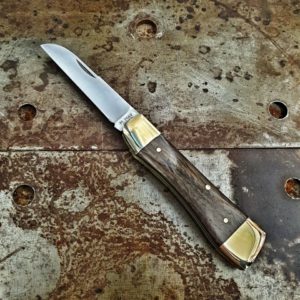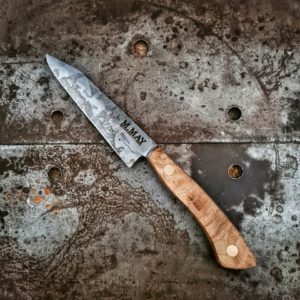£84.00 – £217.00
Custom Pocket Knife
Create your perfect pocket knife by choosing from a selection of handle materials, blade shapes, steels, and even decorative filework. With all the possible combinations we can make a knife tailored to your needs. You can find inspiration from the gallery below and further detailed information about pattern, blade and materials here
✓ UK LEGAL CARRY
Patterns
Ergonomic – This is a pattern I discovered from Trevor Ablett. As the name suggests, it is designed to be a comfortable fit in the hands of the user. It can be fitted with either a lambfoot blade or a clip point.
Ettrick – This is another traditional Sheffield design. It accommodates either the Wharncliffe blade or the half pruner blade. Its unique ‘lazy S’ shape and slim design means it is a comfortable fit in the users hand. It is particularly suitable for general purpose utility cutting, whittling, wood carving, and even model making.
Barlow – The Barlow knife was first made in Sheffield in the 17th century. It went on to become one of the most popular pocket knives of all time. The long bolster and clip point blade made it a very durable and utilitarian tool that was an essential every day carry. This type of knife can be fitted with the traditional clip point blade, but also can accommodate the lambfoot blade just as well.
Barlow (Clayton) – This is a design based on a pattern by Graham Clayton. Graham was one of the best knife makers in Sheffield and his work is highly regarded among collectors and knife makers alike. This knife has the classic clip point blade and long bolster that defines the Barlow knife.
Barlow (Double Bolstered) – This was another pattern that Trevor Ablett use to make. The design of handle is very similar to the normal Barlow knife, except that it has brass bolsters at the blade end and at the back end giving the knife a bit more weight.
Blades
Lambfoot – This blade is a traditional Sheffield design. A straight edged blade with a straight spine the slopes down to the tip of the blade. It was particularly popular amongst farmers for the trimming of sheep’s hooves. Today it is considered more of a utilitarian blade. Its straight cutting edge lends itself well to whittling and trimming, and of course the sharpening of pencils.
Clip Point – The curved area the dips to a point is known as the clip. This is a common blade for a pocket knife. Its point lends well for more precise usage and is good for slicing due to the belly of the blade. A good allrounder and is a staple on Barlow knives.
Pruner – This is primarily used for the trimming of side shoots and taking cuttings. Its curved belly enables it to cut around things with better accuracy than a straight edged blade. A gardeners must have knife.
Wharncliffe – This traditional Sheffield design has been around for 200 years. It has a straight cutting edge and a long curve on the spine that leads down to the end of the blade. It was primarily designed for whittling and is still a popular choice for the task even now.
What is exactly is ‘Damascus Steel’? – Sheffield made hand forged Damascus steel. Forged in Sheffield in the original forge at Portland Works which dates back to the 1870s. The layers of carbon steels are made up of EN42J and 15N20. Once heat treated and ground, the steel is etched to reveal the different layers. All damascus blades are cut from flat stock and hand filed to shape.
File Work – This is the process of hand filing a vine pattern into the spine of the spring and blade. The knife is assembled and ground to shape, then taken apart to enable the filework to be added. The knife is then reassembled and finished. The result is a decorative embellishment that really shows off the handmade element to your knife.
Handle Material
Bog Oak – This wood is English oak that has been buried in a peat bog for around 5000 years. It is the iron salts that have reacted with the tannins of the oak that causes the dark brown colour. The wood is polished to a glossy finish.
Black Walnut – Sourced from North America and is a popular alternative to rosewood because it is far more sustainable. The colour varies from a light brown to a deep chocolate brown. It has a natural lustre that means it polishes up to a glossy finish.
Yorkshire Oak Scales – The Yorkshire oak is sourced mainly from the woodland area of Bawtry in Doncaster. Does well to be oiled with teak or Danish oil every now and again. It will turn darker brown over time with use due to the oils from your hand, showing the journey it has been on with you. Knives made with oak scales are satin finished.
Cherry – This wood is sourced from the Buxton area of Derbyshire. It has a golden blond colour with a fine grain that has subtle red hints to it. These knives are satin finished and can be kept clean and bright with an occasional wipe with teak or Danish oil.
Ebony – This is a traditional wood used in knife making due to its high durability. A dense and heavy wood polishes up to a mirror-like finish. Colours range from dark brown to ink black.
Bocote – This wood comes from Mexico and is very desirable due to its striking zebra-like stripes. Colours range from orange to dark brown and lends itself well to a satin finish. Rubbing with Danish oil occasionally will help keep the wood in the best possible condition.
Stabalised Spalted Beech – The beech is locally sourced from Sheffield. The attractive black lines are caused from certain fungi travelling through the timber. Each piece is stabilised in house using a vacuum chamber and resin, making it hard and durable.
Desert Ironwood – This wood is a favourite among knife makers and collectors alike. It is very dense and stable which makes it a very good handle material. Its colours range from yellow orange to golden brown with dark brown and black streaks. Its dense grain lends itself well to a polished finish.
Black Palm – This wood is technically not a wood, but comes from the same family as bamboo and grass. It grows quick, making it ecologically sound. The main colour is a tan brown with black quill-like spines running through it. It will take a nice polish and a striking handle for you knife.
Elm – Sourced from England, this wood was an abundant feature of the countryside, but Dutch Elm disease decimated the tree leaving it relatively rare. Most elm is sourced from Scotland now. This wood has a lovely grain pattern as is stabilised with resin make the wood more durable. Knives made with elm will have a satin finish.
Stag – Stag antler – or stag horn as was named in Sheffield, is shed from the animal at certain times of the year. It makes a particularly appealing knife handle due to its denseness, durability, and its texture and shape. Its density means it polishes up to a beautiful gloss finish.
African Padouck – This wood varies from orange red to golden brown. It polishes up to a lovely gloss finish due to its natural lustre. It is a durable wood which will darken over time but can be brought back to its vermillion best again with some teak or Danish oil.
